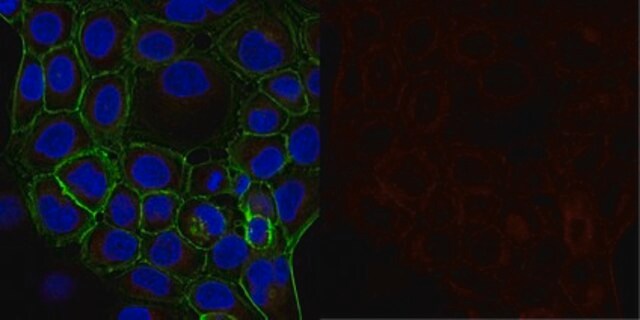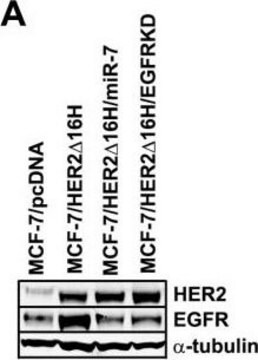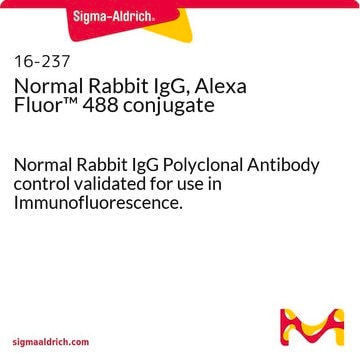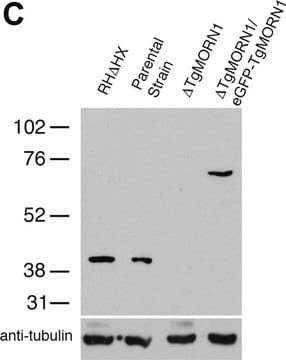16-232
Anti-α-Tubulin Antibody, clone DM1A, Alexa Fluor™ 488 conjugate
clone DM1A, Upstate®, from mouse
Sinônimo(s):
Alpha-tubulin 3, Tubulin B-alpha-1, Tubulin alpha-3 chain, tubulin, alpha 1a, tubulin, alpha 3, tubulin, alpha, brain-specific
About This Item
Produtos recomendados
fonte biológica
mouse
Nível de qualidade
conjugado
ALEXA FLUOR™ 488
forma do anticorpo
purified antibody
tipo de produto de anticorpo
primary antibodies
clone
DM1A, monoclonal
reatividade de espécies
rat, mouse, guinea pig, human, pig, bovine, avian
fabricante/nome comercial
Upstate®
técnica(s)
flow cytometry: suitable
immunocytochemistry: suitable
immunofluorescence: suitable
western blot: suitable
Isotipo
IgG1
nº de adesão NCBI
nº de adesão UniProt
Condições de expedição
wet ice
modificação pós-traducional do alvo
unmodified
Informações sobre genes
human ... TUBA1A(7846)
Descrição geral
Especificidade
Imunogênio
Aplicação
2 µg/mL of a previous lot detected α-Tubulin in RIPA lysates from A431 cells.
Immunocytochemistry:
2 µg/mL of a previous lot showed positive immunostaining for α-Tubulin in HeLa cells.
Qualidade
Flow Cytometry:
0.2 μg of this lot detected α-Tubulin in fixed and permeabilized rat L6, Jurkat, and A431 cells.
Descrição-alvo
forma física
Liquid at 2-8°C.
Armazenamento e estabilidade
Do Not Freeze. Do not store the material diluted.
For maximum recovery of product, centrifuge original vial prior to removing cap.
Nota de análise
Negative Control: Catalog # 16-240, Normal Mouse IgG, Alexa Fluor™ 488-conjugate.
Outras notas
Informações legais
Não está encontrando o produto certo?
Experimente o nosso Ferramenta de seleção de produtos.
Código de classe de armazenamento
12 - Non Combustible Liquids
Classe de risco de água (WGK)
WGK 2
Ponto de fulgor (°F)
Not applicable
Ponto de fulgor (°C)
Not applicable
Certificados de análise (COA)
Busque Certificados de análise (COA) digitando o Número do Lote do produto. Os números de lote e remessa podem ser encontrados no rótulo de um produto após a palavra “Lot” ou “Batch”.
Já possui este produto?
Encontre a documentação dos produtos que você adquiriu recentemente na biblioteca de documentos.
Os clientes também visualizaram
Artigos
Flow cytometry dye selection tips match fluorophores to flow cytometer configurations, enhancing panel performance.
Troubleshooting guide offers solutions for common flow cytometry problems, ensuring improved analysis performance.
Protocolos
Learn key steps in flow cytometry protocols to make your next flow cytometry experiment run with ease.
Explore our flow cytometry guide to uncover flow cytometry basics, traditional flow cytometer components, key flow cytometry protocol steps, and proper controls.
Active Filters
Nossa equipe de cientistas tem experiência em todas as áreas de pesquisa, incluindo Life Sciences, ciência de materiais, síntese química, cromatografia, química analítica e muitas outras.
Entre em contato com a assistência técnica













